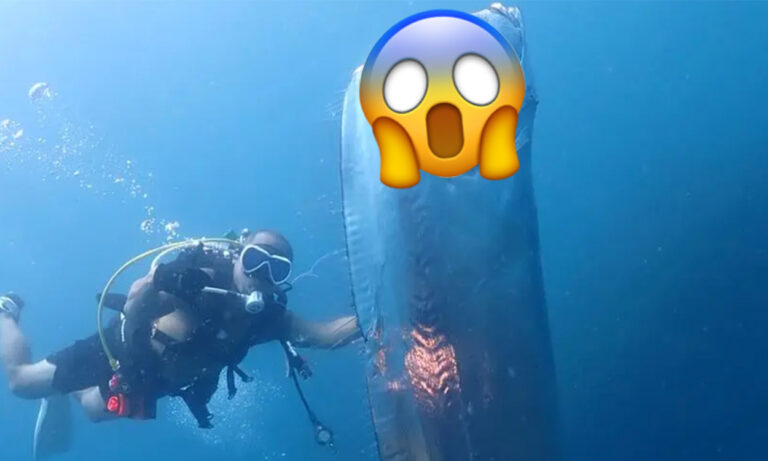Watch this chilling encounter of divers stumbling upon a terrifying doomsday creature

Alright, I can now officially unlock a new fear of the ocean. In June 2023, a few divers off Taiwan’s coast spotted a massive oarfish, over six feet long, with bite marks on its side. For anyone who might not be familiar with oarfish, they’re incredibly large elongated fish which are basically the aquatic equivalent of nightmare fuel. According to Japanese folklore, this fish is a disaster detector. Yep, people believe that it shows up before earthquakes and tsunamis, almost like a doomsday fish.
In a heart-pounding moment, one adventurous diver instructor, Wang Cheng-Ru, boldly reached out to touch this alleged harbinger of doom from the deep. The expert suggested that the serpentine sea beast, with suspicious holes in its body, might have been in distress, leading it to swim into shallower waters. He stated, “It must have been dying.”
Now, you remember how I mentioned the whole ‘doomsday’ theory. Well, these oarfish supposedly beach themselves before earthquakes. Their deep-sea habitat, residing between 656 and 3,200 feet below the ocean’s surface, only adds to the mystery of their supposed connection to potential earthquakes. In fact, in 2011, right before the Fukushima earthquake, many of these eerie fish washed ashore before the tragedy.
@dylan.page What do we think about this?🤔😳
♬ original sound - Dylan Page
So, amid the awe-inspiring sight, one can’t help but wonder if the oarfish’s daring journey into shallower waters was a sign of unfortunate events to come.
However, that all being said, a number of scientists and divers aren’t fully convinced there’s any spooky connection between these fish and disasters. Expert and professor, Hiroyuki Motomura, doesn’t buy into the whole doomsday fish drama either. In an interview with the New York Post, he stated that there is “no scientific evidence” pointing to this connection. According to Motomura, when these fish aren’t feeling too hot, they ride the water currents to the surface, that’s why they’re often found floating lifeless. At least that’s one fishy mystery debunked.





